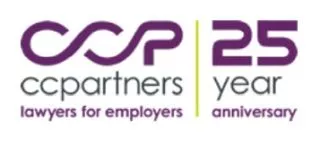- in South America
- with Senior Company Executives, HR and Finance and Tax Executives
- in South America
- with readers working within the Basic Industries, Consumer Industries and Insurance industries
The decision in Toronto Metropolitan Faculty Association v Toronto Metropolitan University is yet another decision impacting the ever-evolving world of workplace investigations in Ontario.
Background
This decision arises from two grievances filed against the Toronto Metropolitan University (the "University") by the Toronto Metropolitan Faculty Association (the "TMFA") on behalf of the grievors, JM and EVDM.
JM Grievance
A professor at the University filed a discrimination complaint (the "Complaint") with the University's Human Rights Services Office (the "HRSO"). Following a preliminary assessment by the HRSO, the University decided to retain an external person to meet with the complainant, identify the respondent(s) and conduct a threshold assessment of the allegations. If the complaint passed the preliminary stage, the external person would proceed to conduct an investigation into the allegations. The University entered into a retainer agreement with Investigator A, to perform this work. Investigator A proceeded to:
- Meet with the complainant to conduct a threshold assessment;
- Determine that the required threshold was met; and
- Identified JM as a respondent to the Complaint.
Shortly thereafter, the University gave notice to JM of the Complaint. JM was also advised that an external investigator had been retained to review the Complaint and to provide advice regarding the preliminary assessment of the allegations (i.e. establish whether the allegations, if true, would meet the threshold to establish a prima facie case of a violation of the University's Discrimination and Harassment Prevention Policy). Investigator A then proceeded to contact JM to advise that the University has retained them to conduct the investigation into the Complaint.
The TFA objected to the assigning of Investigator A as the investigator in this matter, citing that Investigator A had already been involved with the file in a different capacity during the prima facie assessment stage. This formed the basis of the JM Grievance.
EVDM Grievance
Two University faculty members made formal complaints against EVDM (the "Complaints"). The University retained Investigator B to investigate the Complaints. Investigator B received and reviewed the Complaints. The two faculty members then proceeded to retract the Complaints, citing that they no longer wanted to proceed with same.
In turn, the University contacted Investigator B to conduct a University-led investigation instead of the investigation into the Complaints. On the same day, the University received a letter (the "Letter") from six (6) faculty members, citing conflict in their department. This Letter was provided to Investigator B, who proceeded to meet with six (6) faculty members initially. Investigator B further identified two (2) additional witnesses which they later interviewed.
The University sent EVDM a notice of the investigation under the University's Workplace Civility and Respect Policy and advised EVDM that it had engaged Investigator B to investigate complaints it had received.
The TFA objected to the investigation, citing that no details of the allegations had been provided to EVDM and the identities of the complainants had not been identified. Further, and of greater importance, the TFA objected to the appointment of Investigator B by the University given their previous involvement in matters directly related to the investigation and possibly provided other counsel to the University on same. The TFA went on to provide that while there may be no conscious bias in serving as an investigator in this matter, there had been enough involvement prior to the investigation to warrant a concern about unconscious bias, such that a new and independent investigator was required in order to ensure a fair process. This formed the basis of the EVDM Grievance.
The Issues
The Arbitrator was tasked with two (2) main determinations:
- Were Investigators A and B in a solicitor-client relationship with the University while conducting the investigations; and
- If the answer to Issue #1 is yes, did this solicitor-client relationship lead to the University violating the Collective Agreement, the Occupational Health and Safety Act, and/or the Ontario Human Rights Code.
Analysis and Decision
Issue #1
Arbitrator Hart found that the retainers between the University and the Investigators overwhelmingly spoke to and created a solicitor-client relationship between the University and Investigators A and B. In both retainer agreements, it is expressly stated that the Investigators would be rendering their reports "as legal counsel", for the express purpose of preserving the "privilege" attached to these reports. The services for which the Investigators were retained were inextricably inter-connected, and therefore simply could not be carved up into certain services that were not provided in a solicitor-client relationship. Therefore, a solicitor-client relationship existed between the Investigators and the University while conducting the investigations.
Issue #2
Arbitrator Hart found that the retainer agreements gave rise to a reasonable apprehension of bias. In turn, the Arbitrator found that:
- The University failed to exercise its rights under its own policies in a "fair and reasonable manner" and therefore violated the Collective Agreement's Management Rights provision;
- The University failed to uphold its obligations under the Ontario Human Rights Code to reasonably investigate a complaint of Code-based discrimination or harassment; and
- The University failed to meet the expectation that an investigation under s.32.0.7(1)(a) of the Occupational Health and Safety Act be conducted by an "impartial" person, and the well-accepted legal principle of procedural fairness that an investigation into workplace harassment must be objective.
Takeaways for Employers
Where an Employer has retained counsel to provide advice on a harassment or discrimination complaint, any ensuing investigation pursuant to their obligations under the Ontario Human Rights Code or the Occupational Health and Safety Act should be performed by a separate investigator. If an employer wishes to use legal counsel for an investigation care must be taken in terms of the scope of the retainer and the limits of privilege over same.
The content of this article is intended to provide a general guide to the subject matter. Specialist advice should be sought about your specific circumstances.


